
Museum Rooms Spiritual & Religious
“Artefacts from the Museum Collection
— Quote Source - The Curator
We should also add ritual, because many things invade our lives as rituals, often long after the previous meanings have been lost or forgotten. The Japanese for example are very keen on rituals, such as tea ceremonies, or the perhaps long forgotten ritual of “The Way of Tobacco" (tabako-do). Even Christmas which is often thought of as “Christian” has its roots firmly in the so called pagen era, and whilst some of the “rituals” have died out some such as Wassailing and Mumming still continue in odd pockets around the UK and Europe. We will expand more on this in later editions.
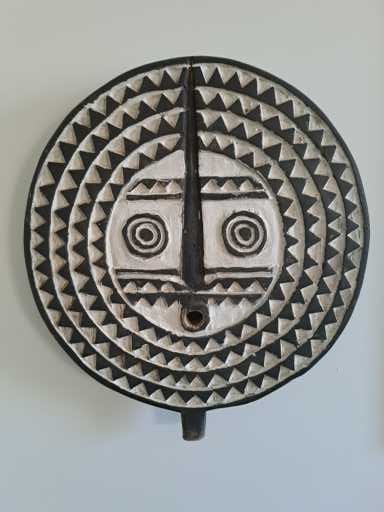
Polychromatic Sun Mark - Senegal
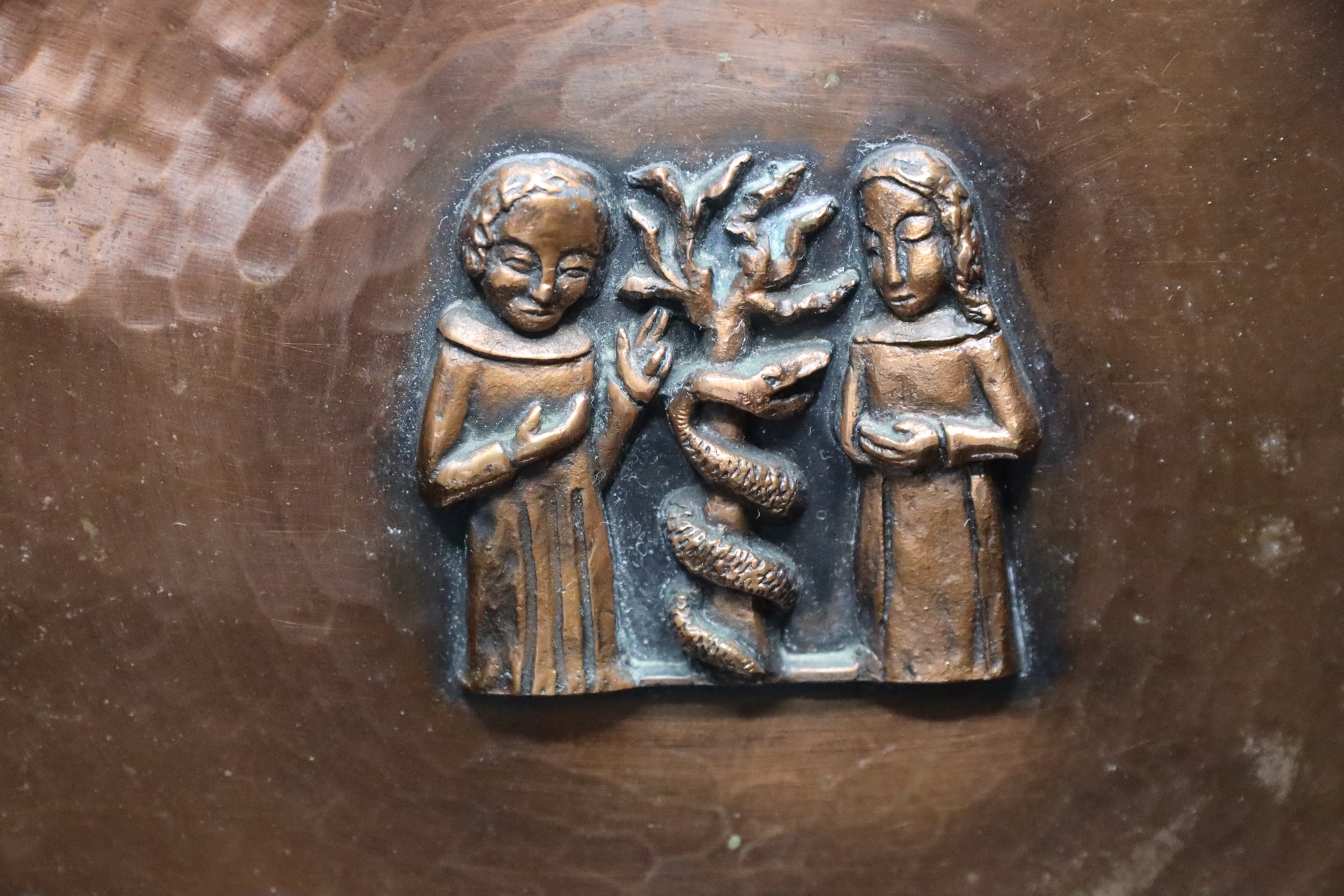
Margit Tevan - Religious Copper Plate - Hungary
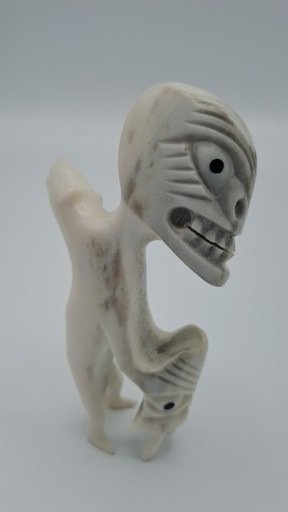
Shaman zoomorphic human polar bear carving - East Greenland
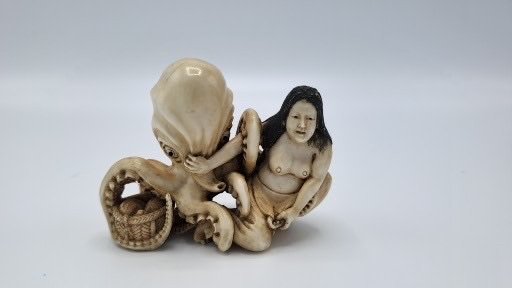
Japanese folk tale - the pearl diver and the octopus.

Olmec / Mayan - rare blue jade pendant - Coffee bean eyes
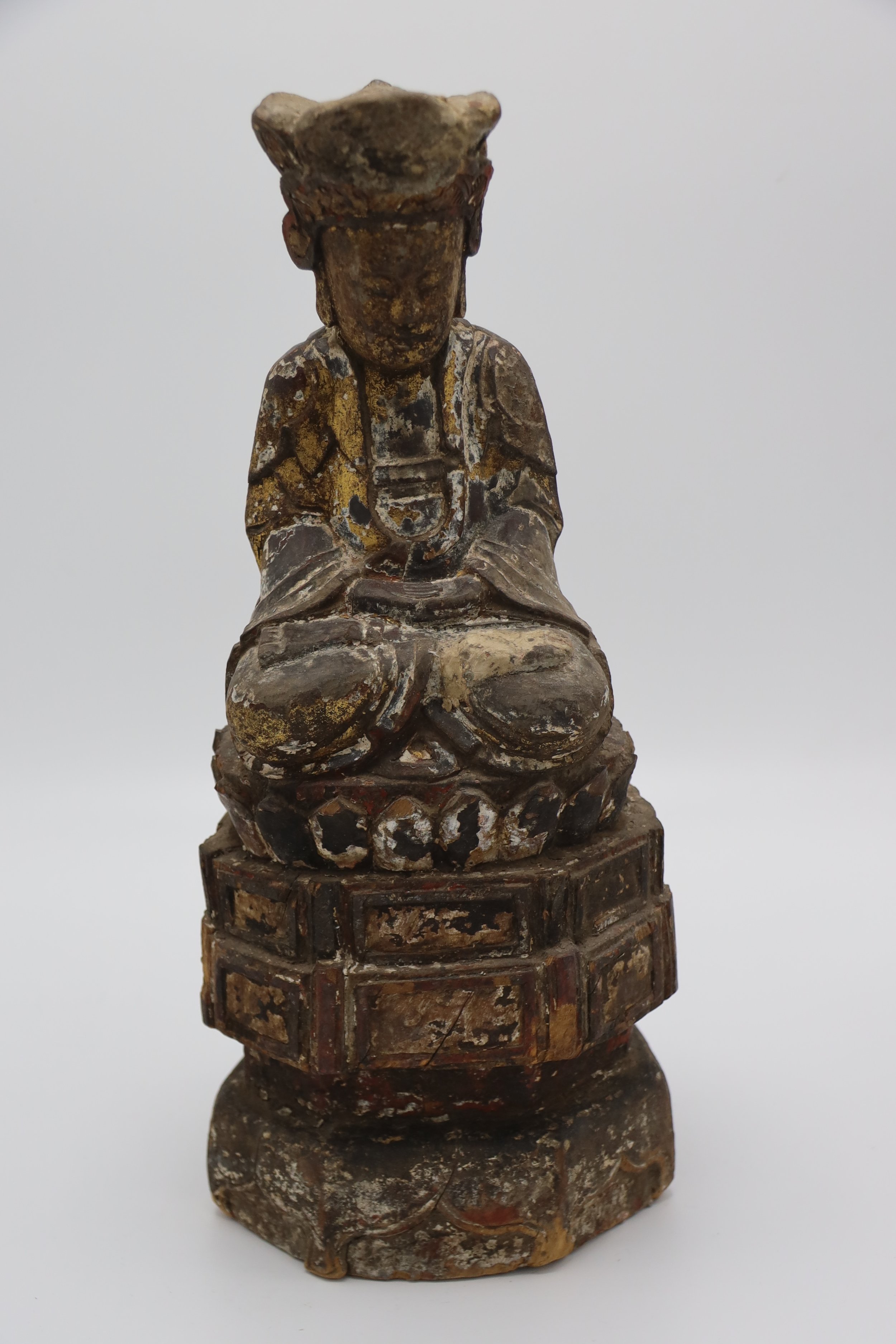
15th C Goddess of `Mercy - China
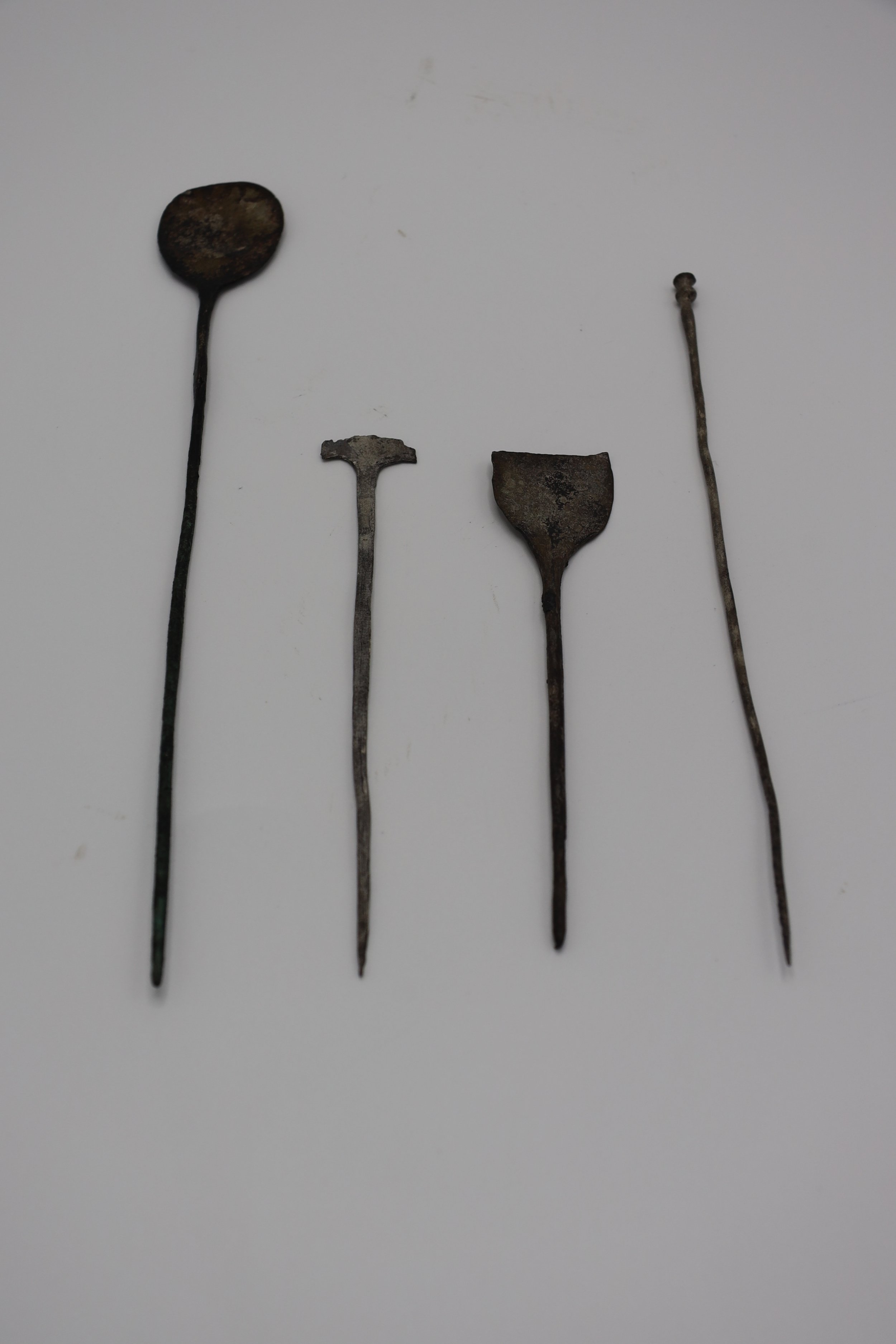
Ritual set - hairpins and spoons - Chimu peoples Northern Peru

Solidarity - Polish born resistance movement - many people died for the freedom of Poland. The church played a large role in helping the Polish people achieve their own destiny. The electrical resister has two meanings, as it started in the electrical workshop.

Grave goods Egypt 21st Dynasty
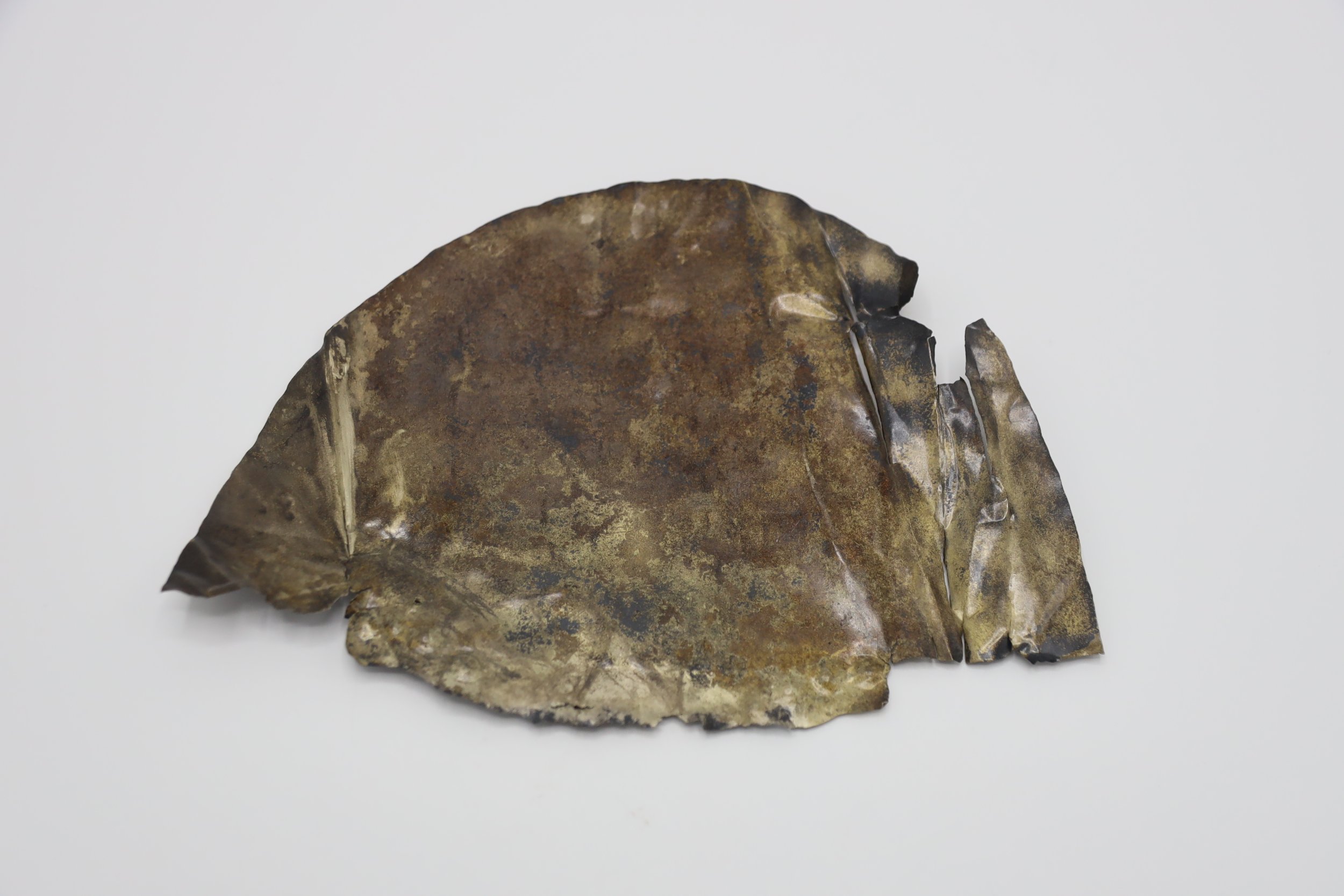
Nose ring or crest - Chimu pre columbian North Peru
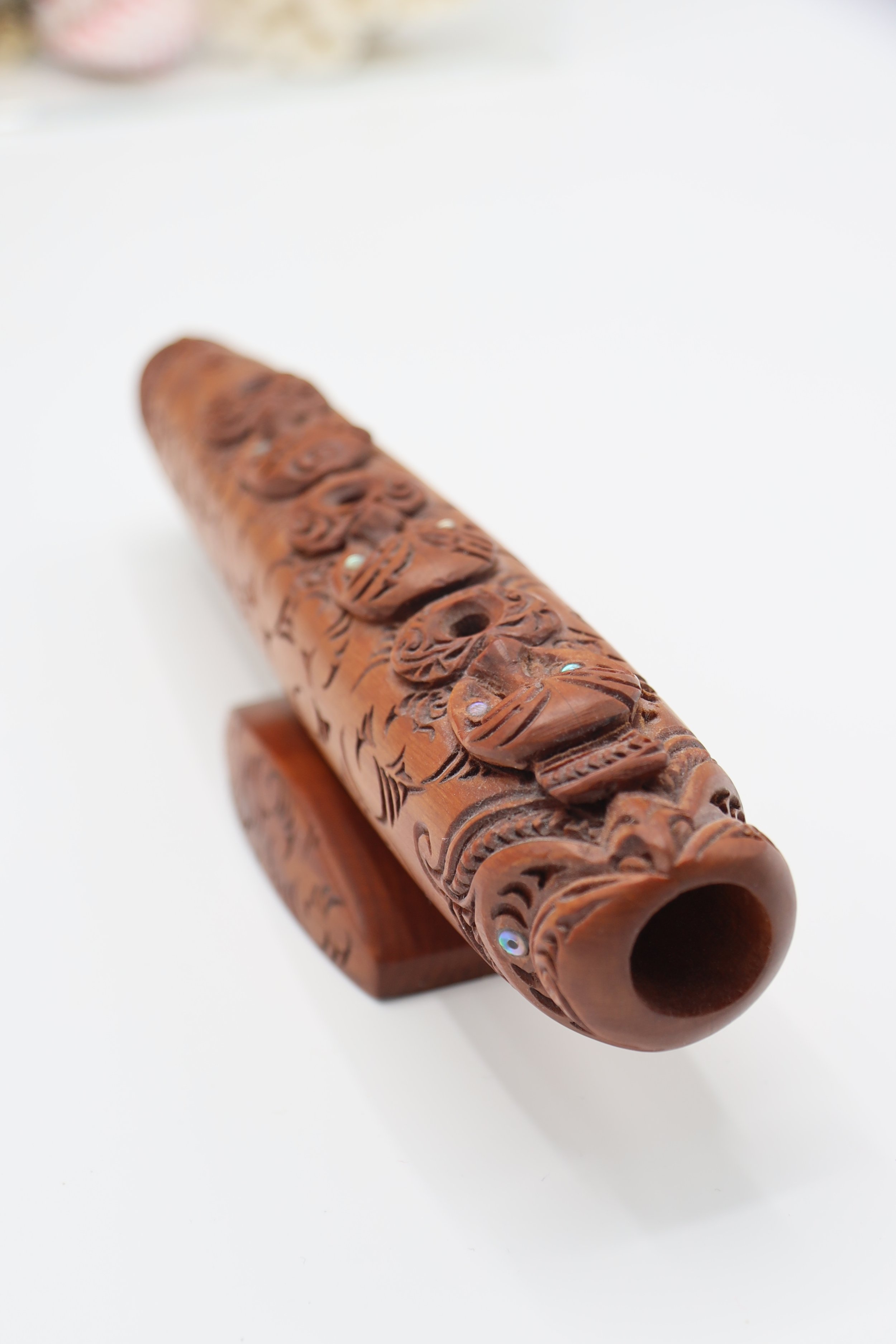
Flute with ornate carvings and mother of pearl inlays - New Zealand South Island
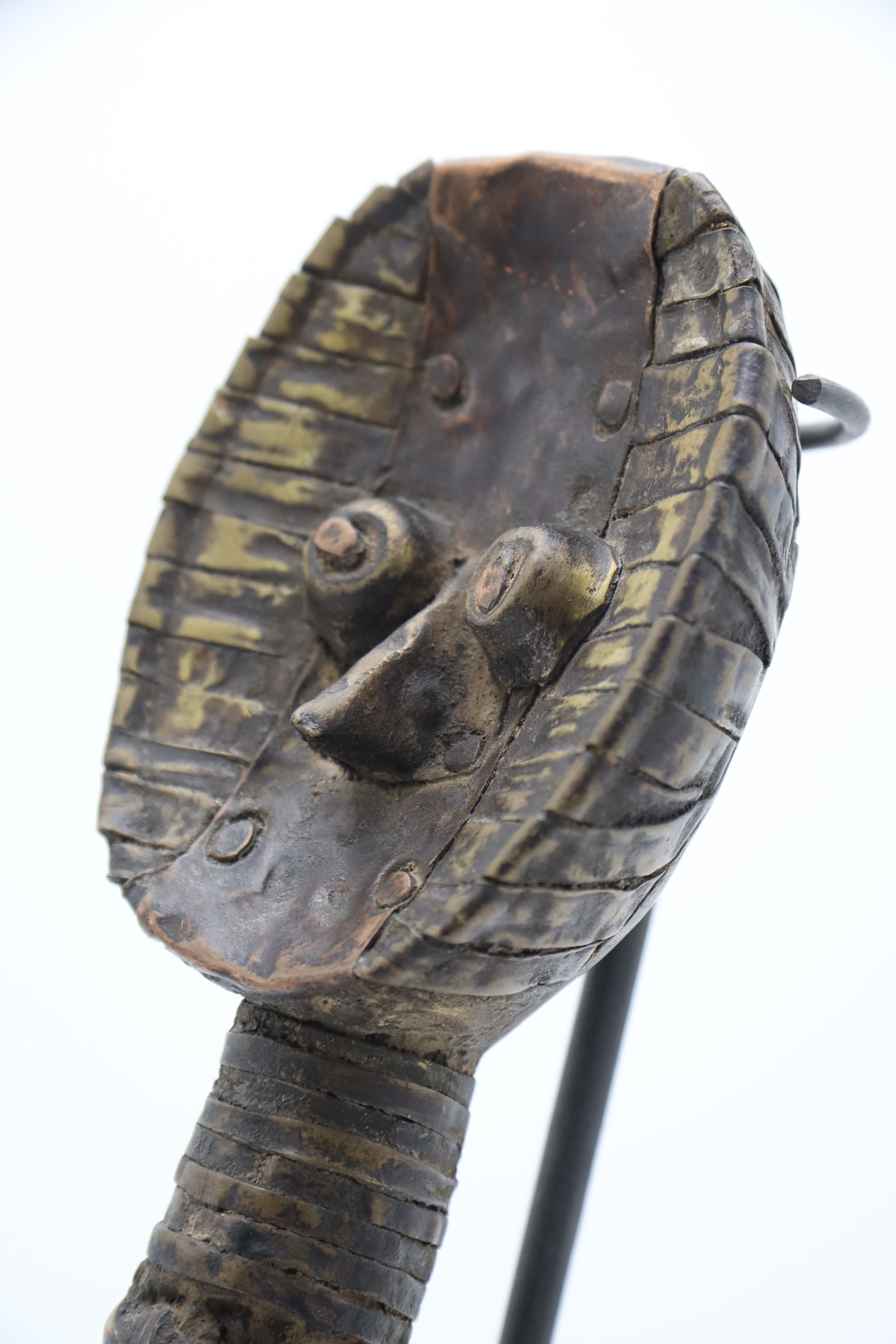
Shaman Ritual rattle, basket weave and tin
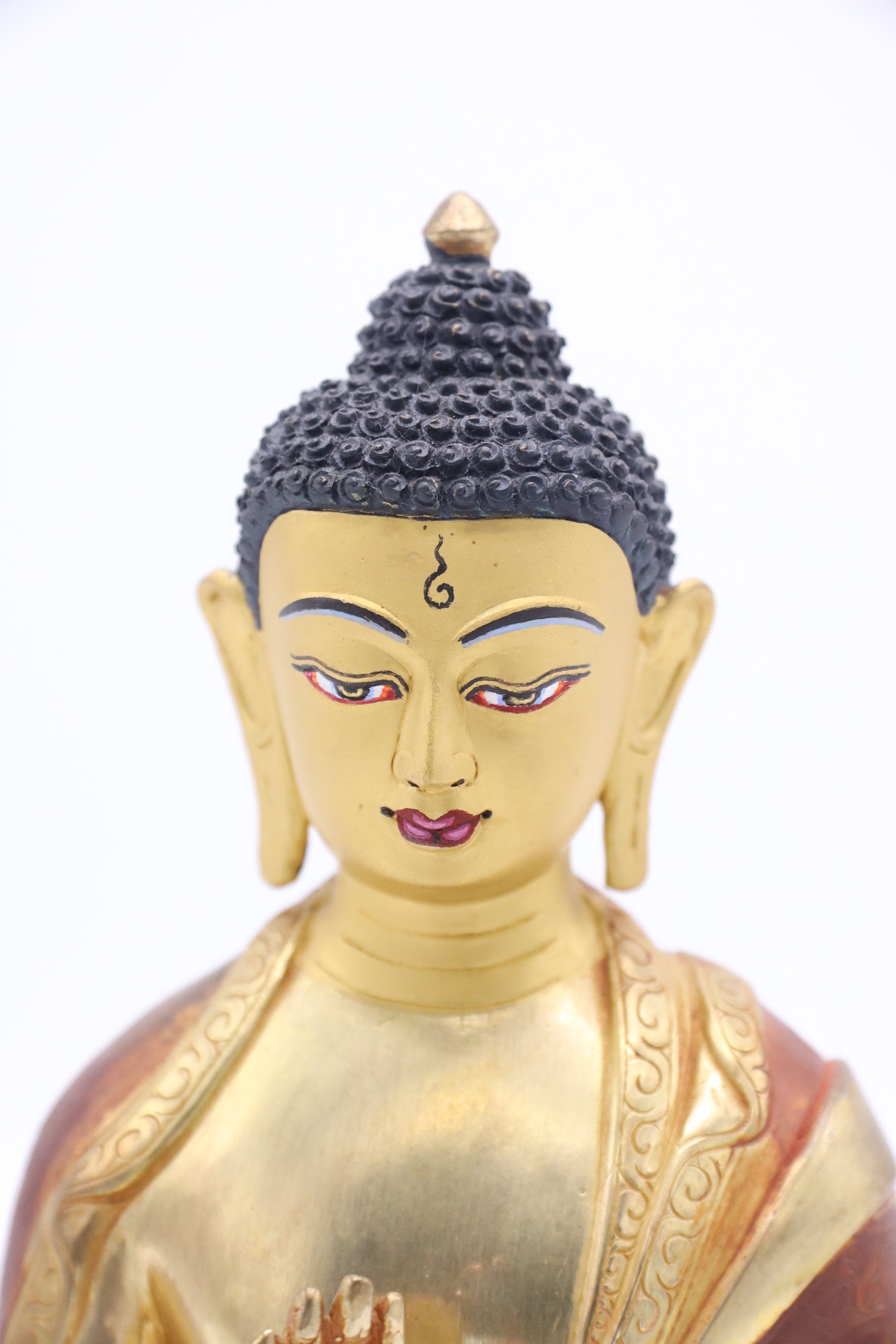
Nepal Copper and Gold leaf statue of Lord Buddha

Phoenix / Fire Bird - playable wind instrument - made from gold bearing clay - Venezuela

Coffee bean eye ritual mask - not always worn on the face!
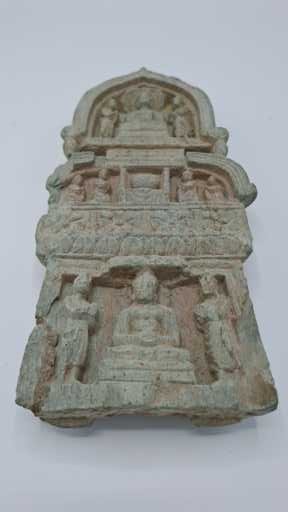
Detail of 3rd / 4th c stone carving, features lotus leaves and many religious icons.

Detail of Schist carving showing Lord Buddha with attendees.
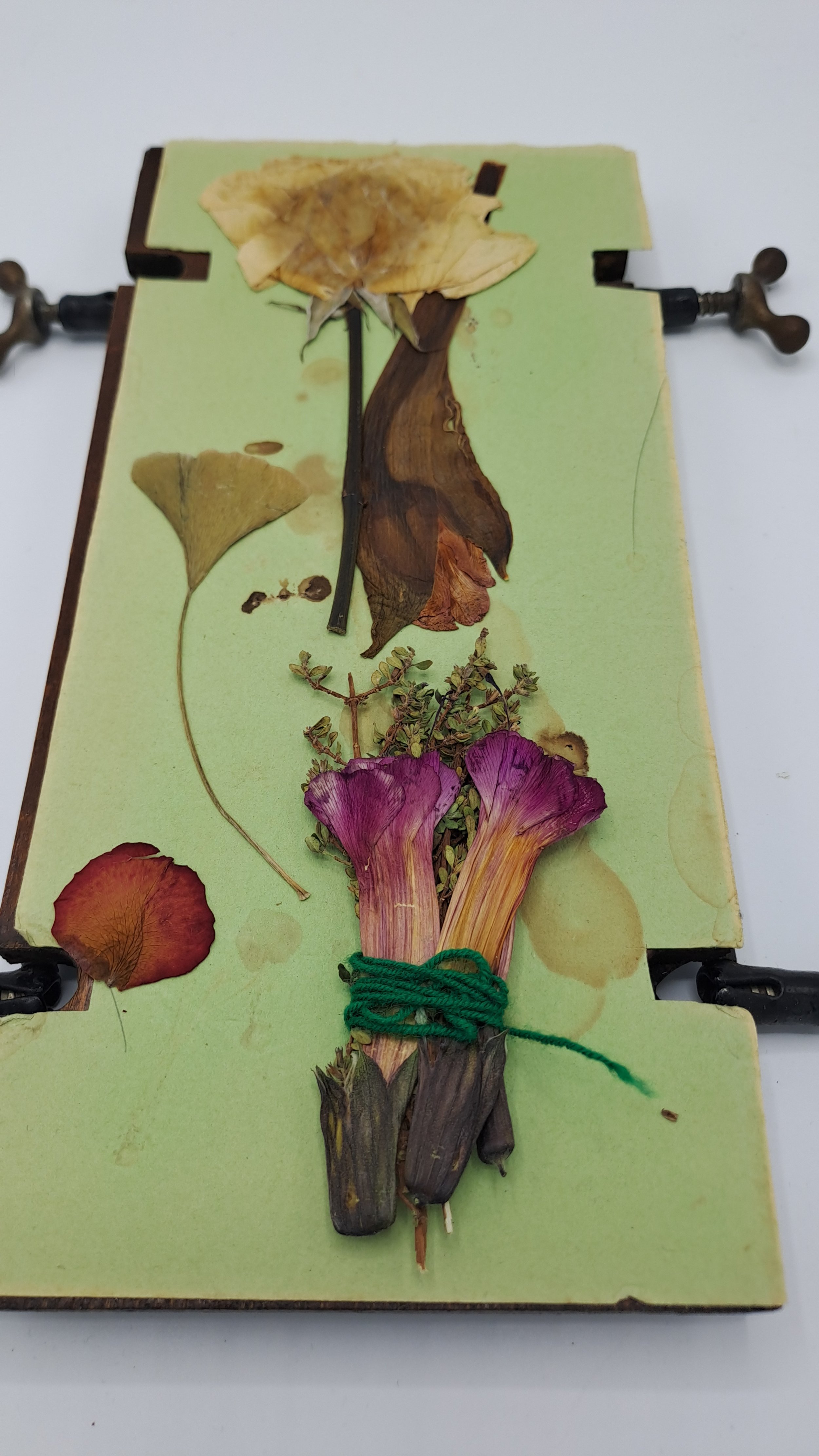
Bottom centre - Inca ritual posy - Lake Titicaca (Peru)

Margit Teven - Soviet era goldsmith her work features scenes from the bible and workers .
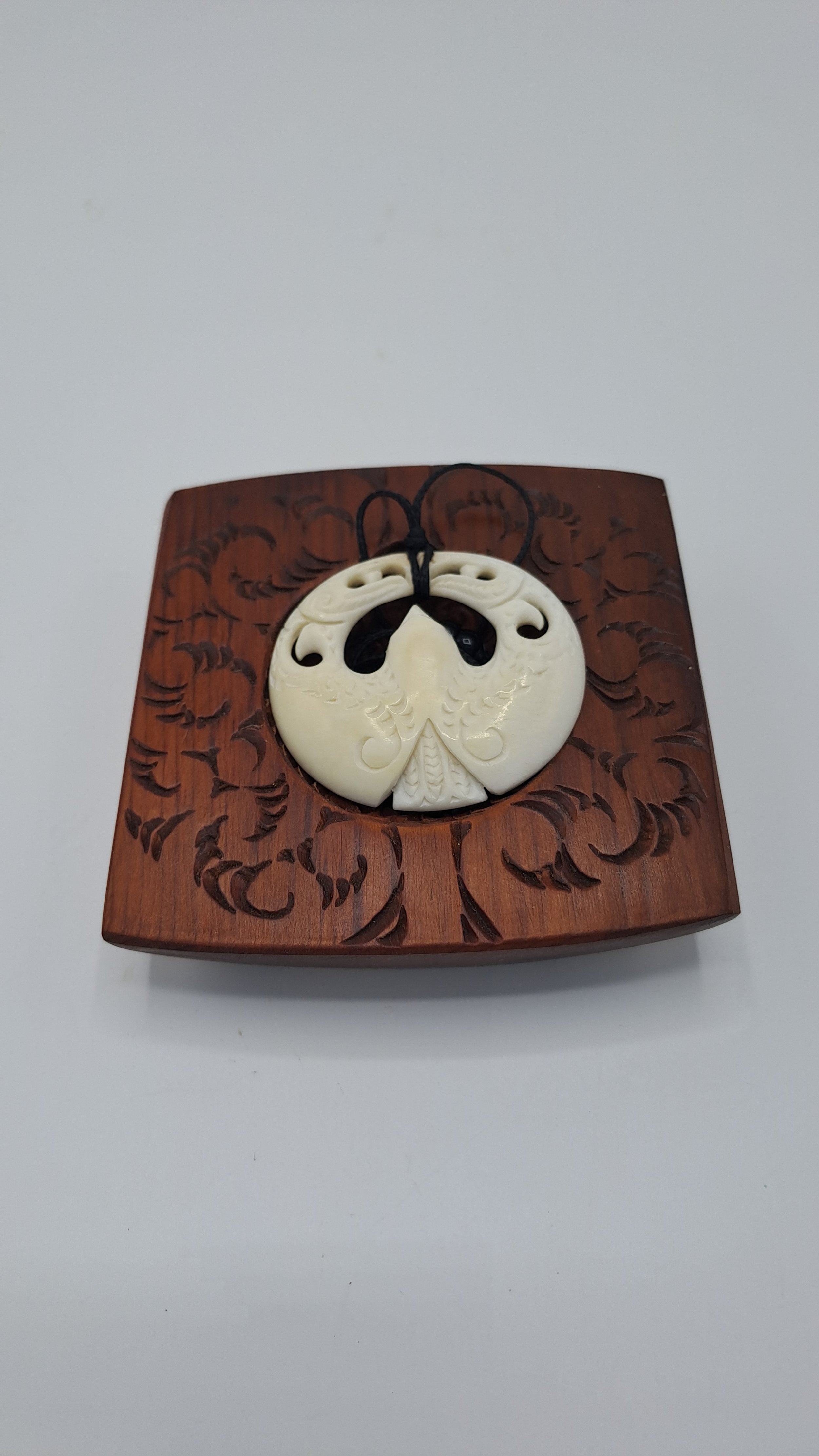
Kea - A type of Mountain Parrot, carved from bone on beautiful carved wooden base.
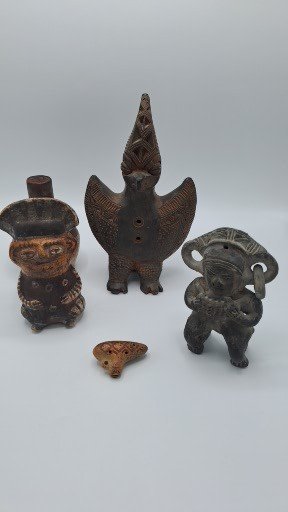
Various South American pottery figures, Aztec pre Columbian Musician (Mexico City Mexico) Water Ritual vessel (Peru) and Wind Instrument - Ocarina (Peru) "Giver of Life" wind instrument (Venezuela)
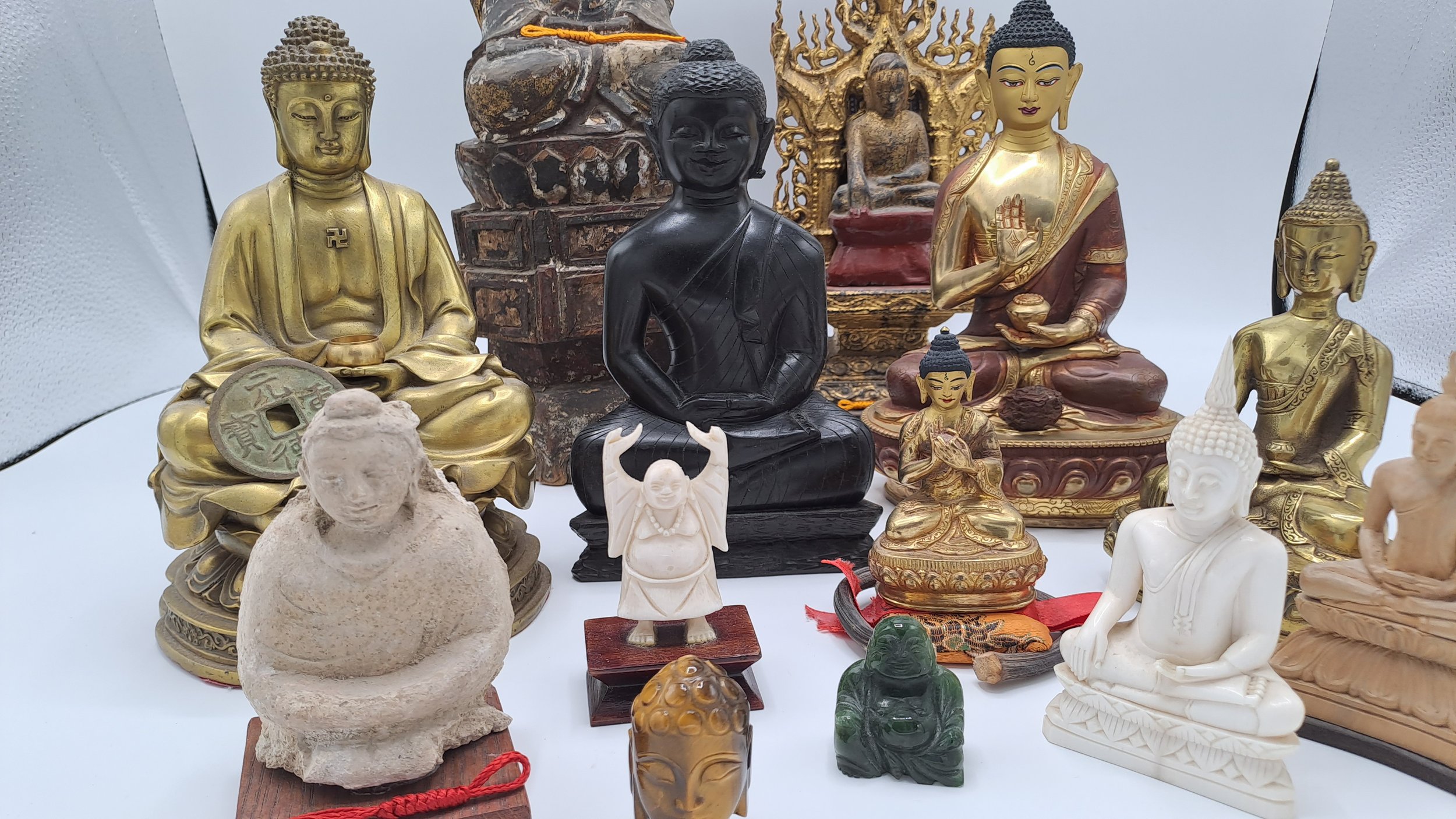
Back right Burmese Buddhist statue and alter piece gold leaf and lacquer c16th c.
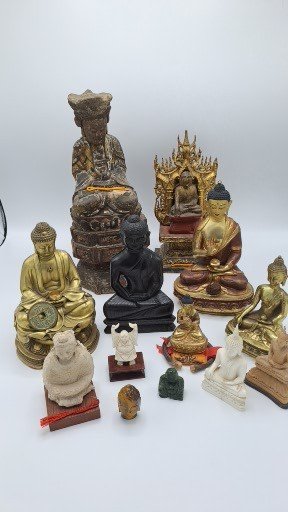
Collection of Buddhas from Burma, Thailand, Mongolia, China, Tibet, Sri Lanka, Nepal and India, including tigers eye, cedar wood and stone.

Bread 'N" Buddha - 3 Thailand Buddhas 1980's - Jade, Bone and Resin. Bread is in the ascending position, 'N' top right and Buddha is the small grey jade one.

Various pendants including Confucius, and Jaguar God together with Celtic symbols from the Outer Hebrides.
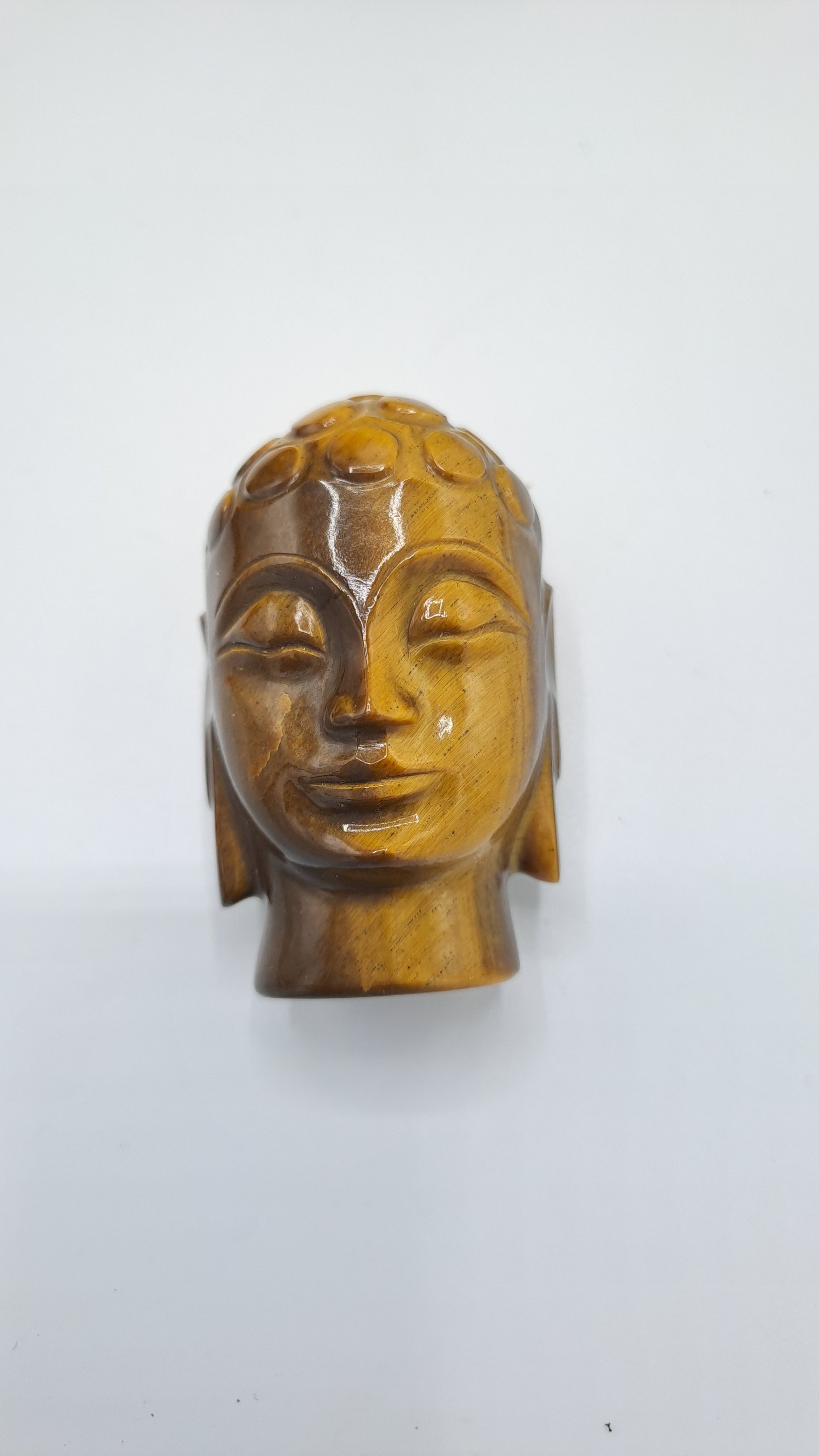
Tigers Eye Buddha Head (Thailand) - Tigers eye is a form of non crystalline asbestos.
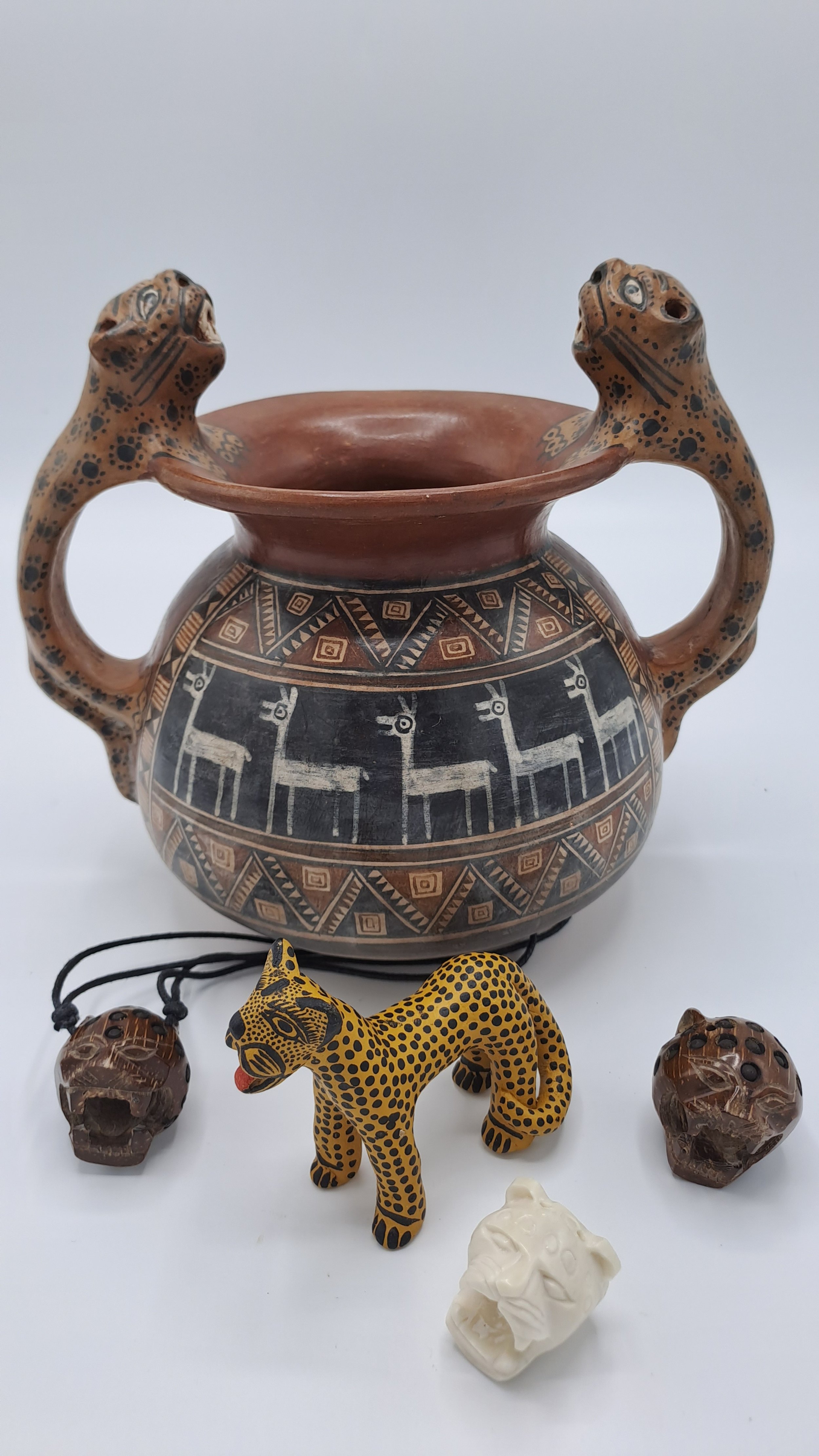
Ritual Jaguar Bowl - from Museo Larco (Peru) decorated with Lama motifs and various Jaguars from Honduras, Mexico, Peru and Nicaragua.
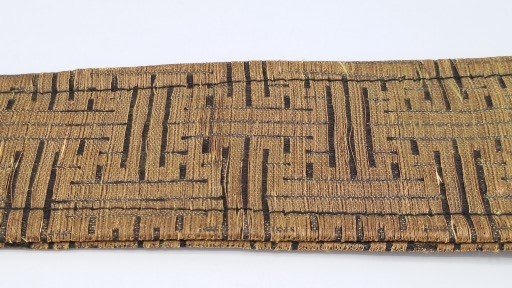
Swastika - In its correct form - Edo Period Samurai gold thread pipe case.
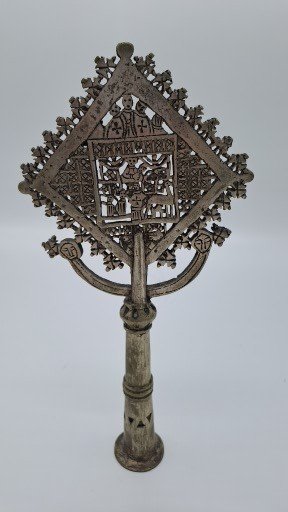
Headstaff of silver with various religious scenes Ethiopia
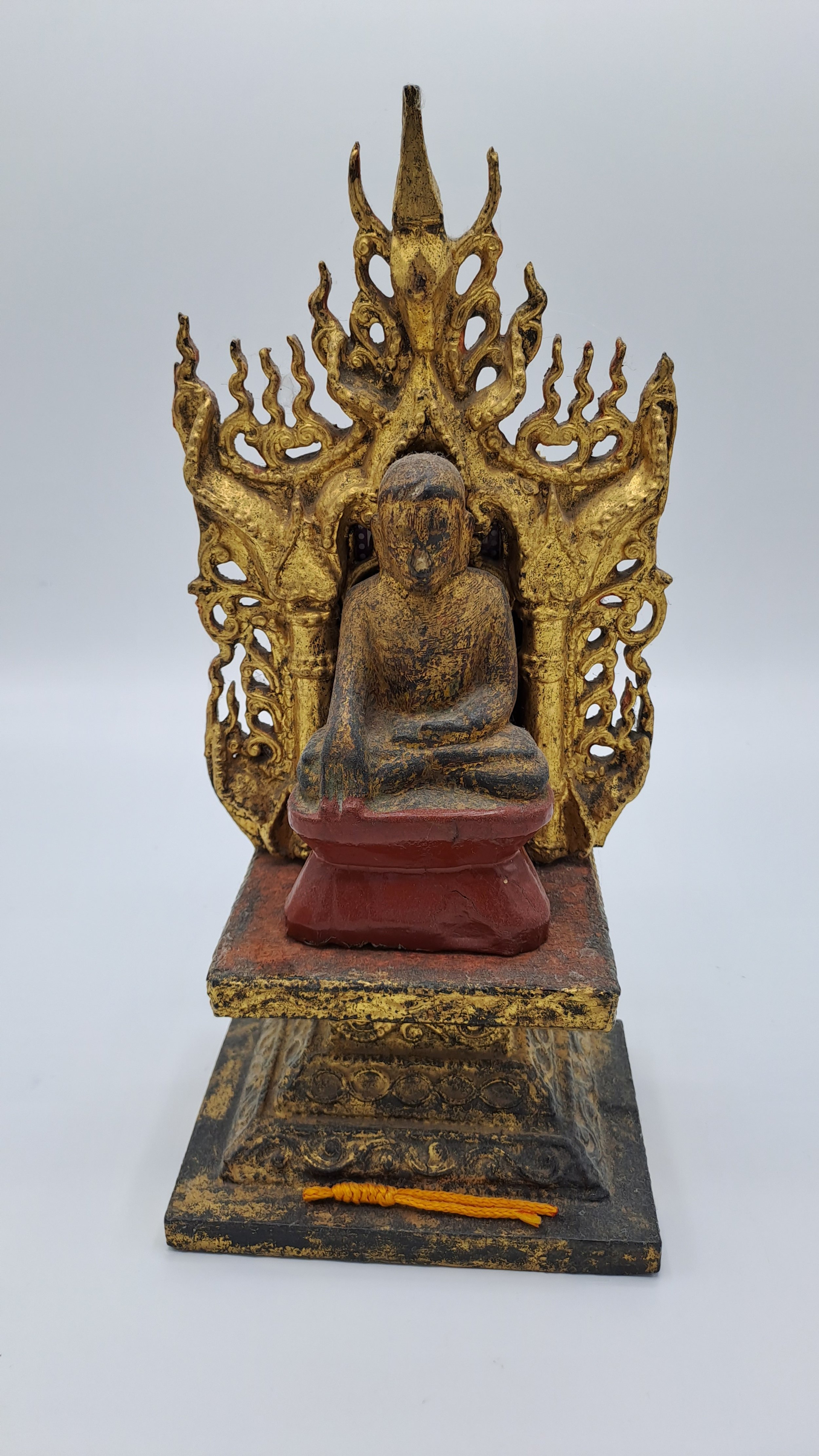
Burmese Buddha on plinth of 24ct gold leaf and red liqueur work, with protection string from the temple of the Panchen Lama.
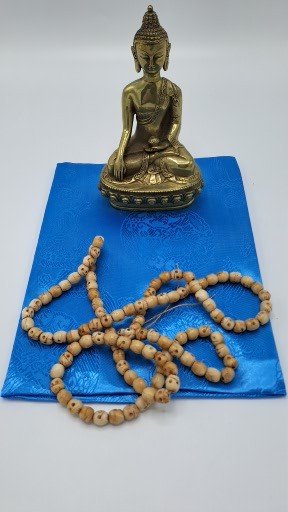
Mongolian set - sky blue kata (silk scarf) Brass Buddha from Erdene Zuu Monastery and individual carved skull neckless. Each one is an indvidually carved human skull.
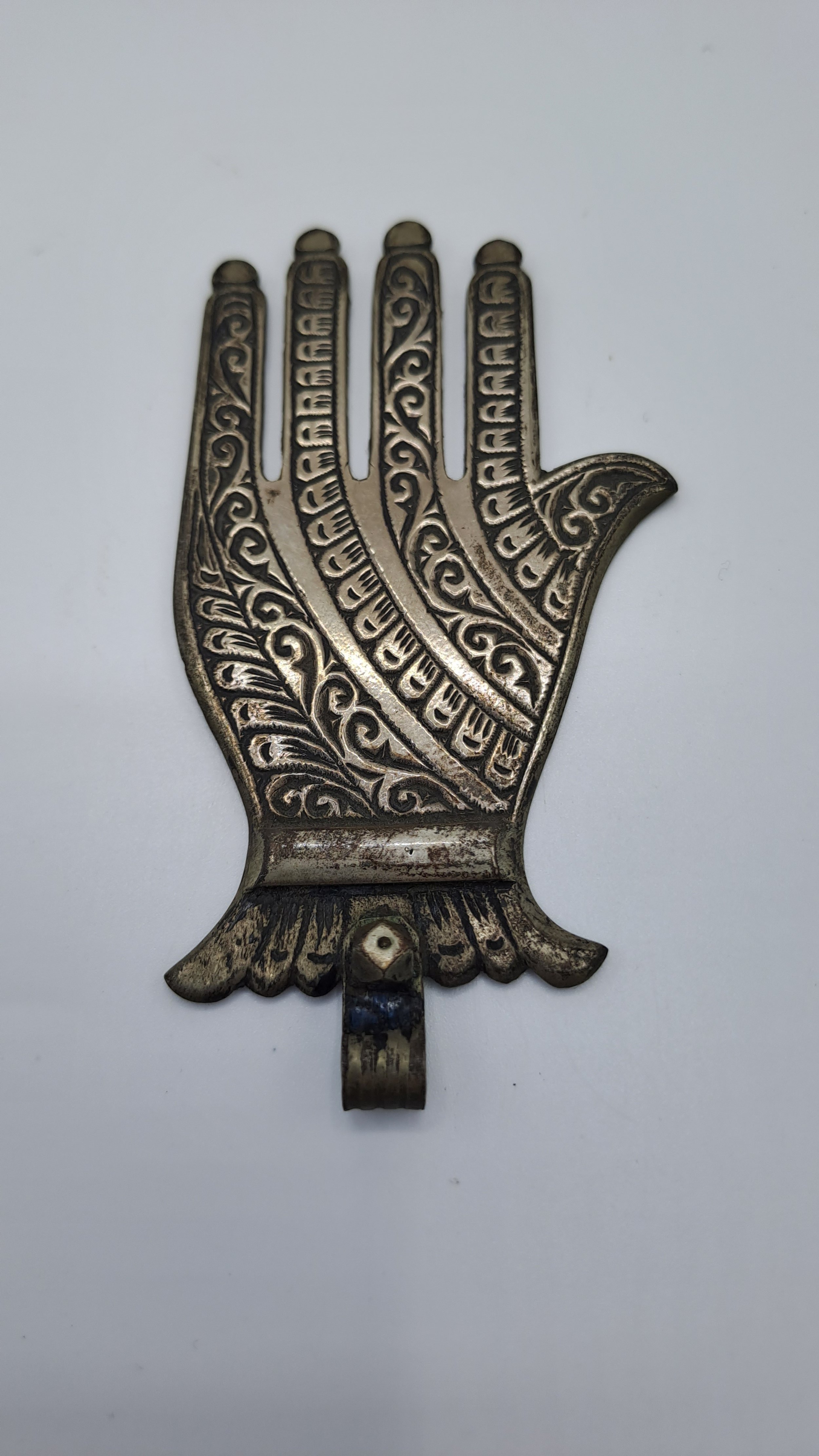
Hand of Fatima - Silver - Lebanon
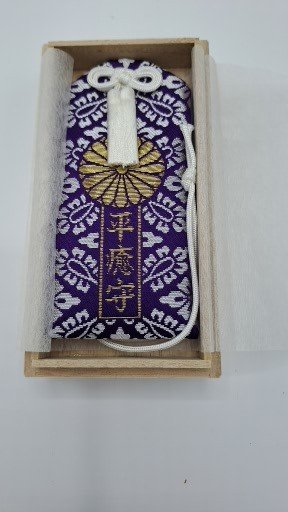
Modern Japanese ritual pouch in wooden box - Tokyo (Japan)
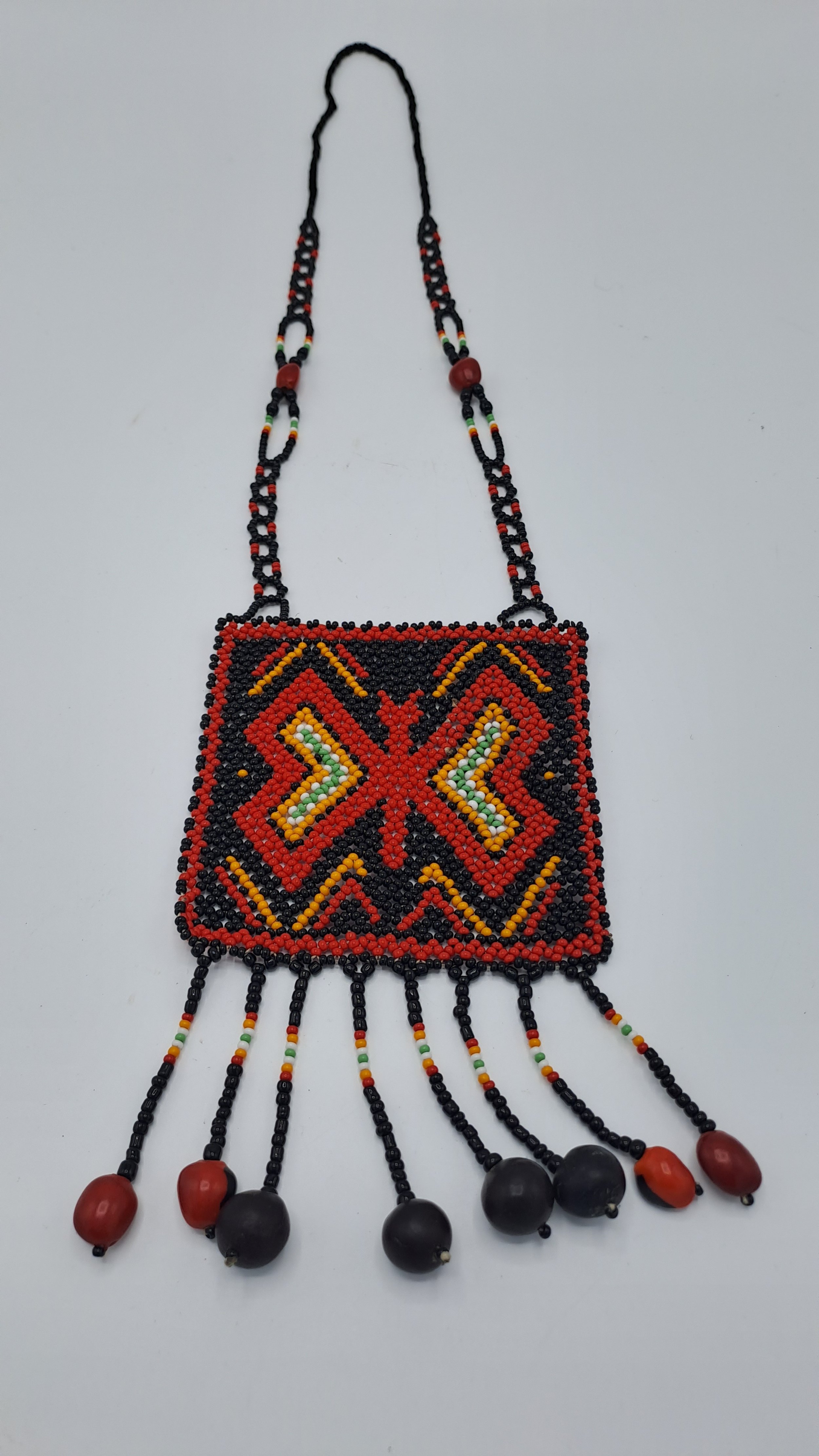
Încă bead and shell work - of butterfly

Edo Period ritual smoking set, silk pouch with Menuki Mask. These would have been for pipes.
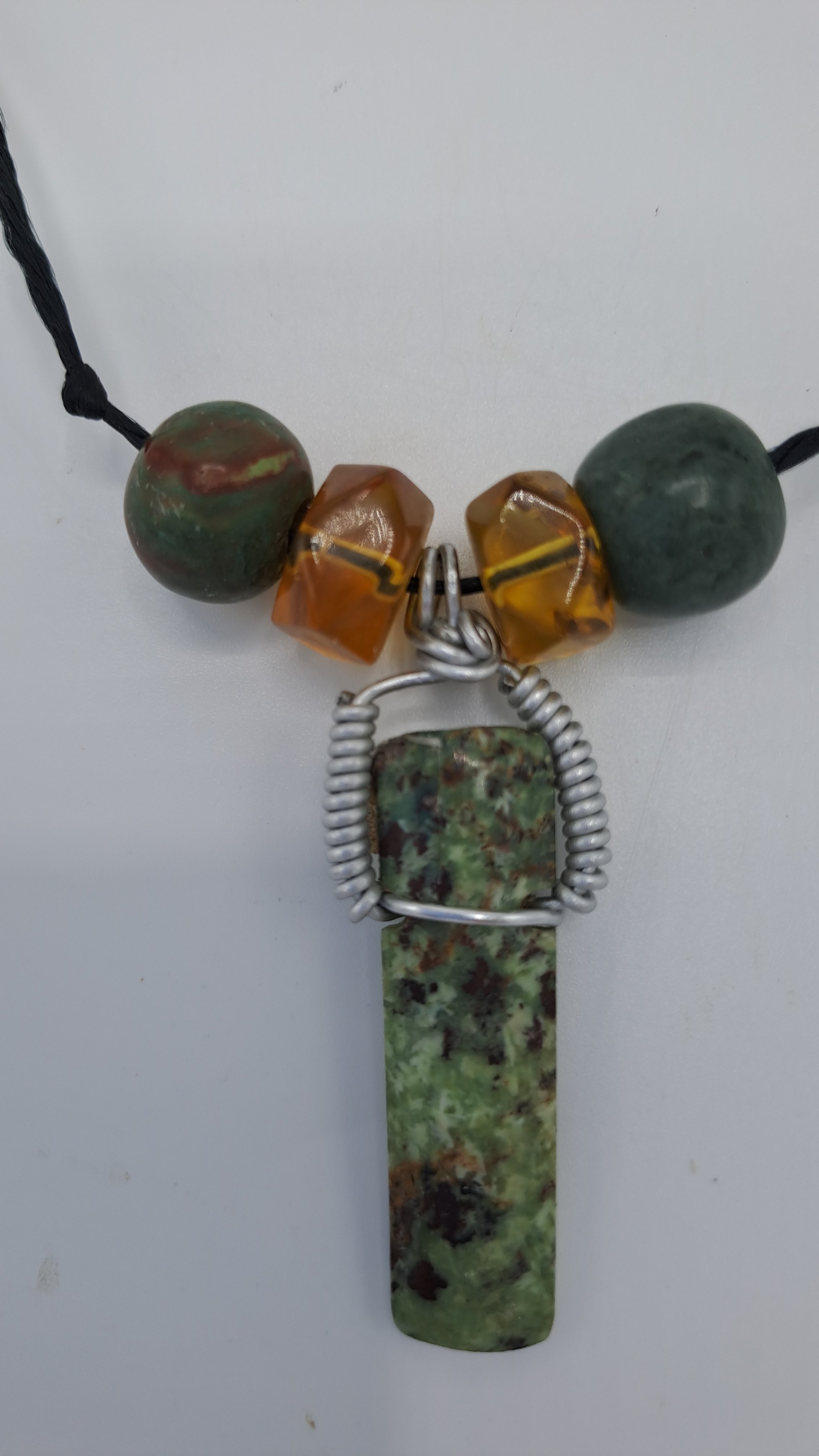
Mayan Jade and Amber Beads in modern setting made by Mayan descendants.
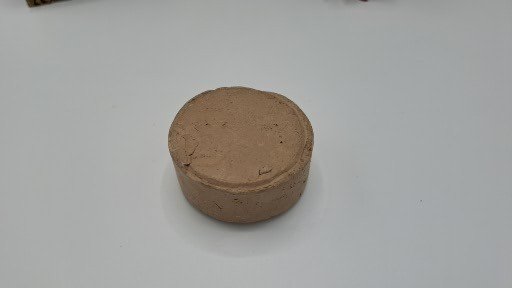
Clay Pillow - Shia Muslim Iran. For prayer time, so your head does not touch the floor. given to us as a gift by the local Inman.
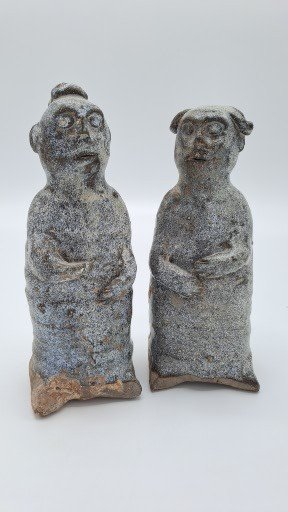
618 - 907 AD Tang Dynasty - ritual blue glazed figures which feature hairstyles of the day - including male "Top Knott' and Female Princess Leia style "Buns."

Contemporary Gabah Prayer Mat - India
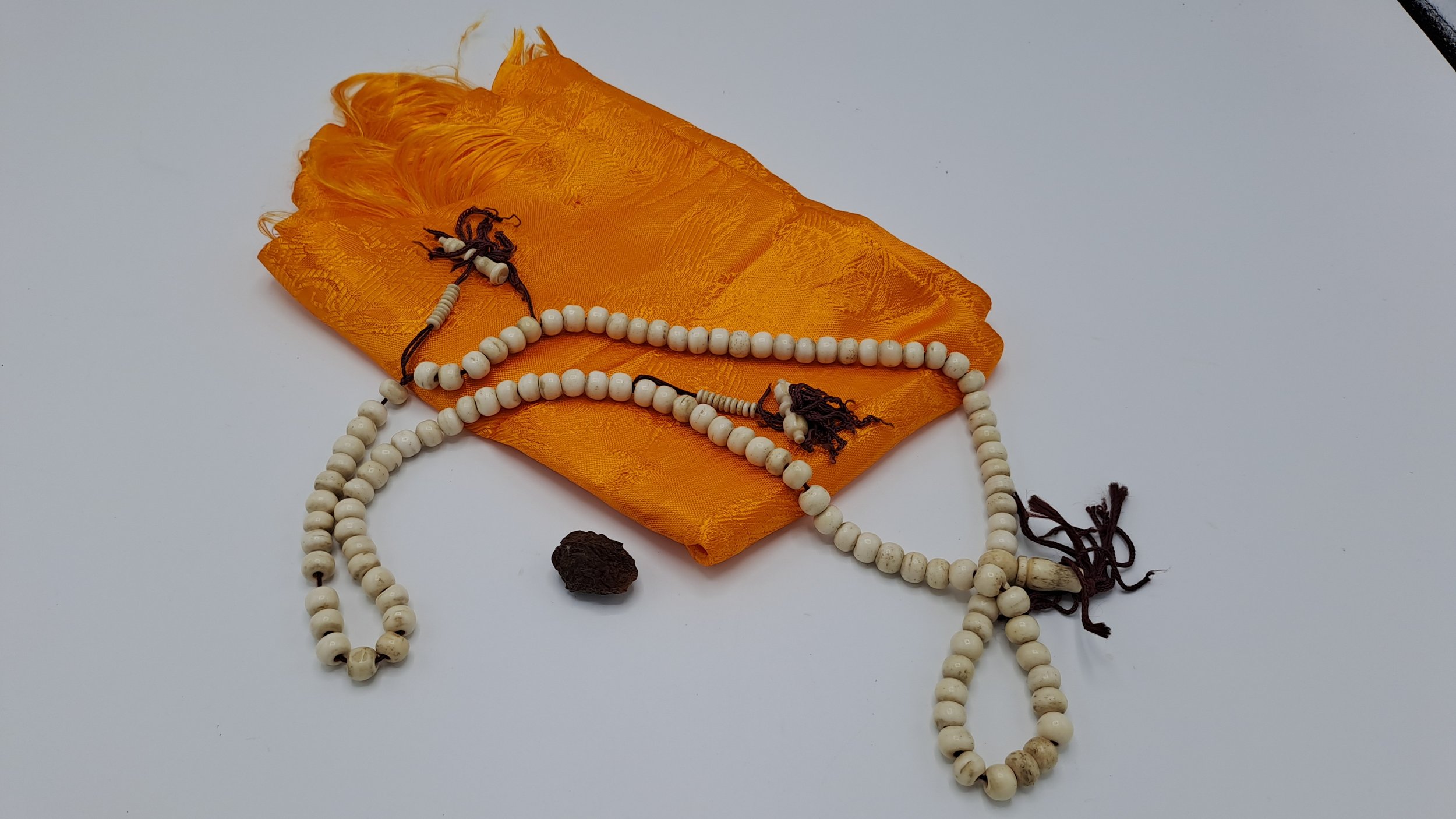
Yak beads and counting system, Buddhist Khata (Orange scarf) and peach stone - Tibet. These were presented to us in the Qoikang Monastery, Jokang, Jokhang Temple, by the Gelug School in an amazing ritual. The beads came from Everest base camp North.
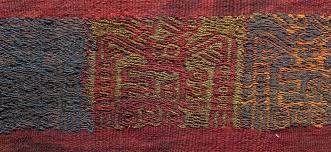
Ancient Aliens - Textile Chimu Culture 1000 AD
Tibet Monastery - Ritual Tamping the Floor - Traditional Work Song. Ceremonies like these have existed for centuries. It is a way of engaging the community and getting work done. Sea shanties formed a similar purpose.
Focus on Item Gold Wire & Silk Thread Japanese Samurai Kiseru Pipe Case, tobacco pouch.
An Edo Period Gold Wire & Silk Thread Japanese Samurai Kiseru Pipe Case Circa 1780. Completely decorated with the Manji [swastika] mon of the Hachisuka clan. The Edo period (1603-1868) that precedes the development of cigarettes in Japan was the heyday of kiseru. From the early seventeenth century when the bans were lifted, tobacco was already well established in all classes as a luxury goods. It was at this time that really developed the use of kiseru and the so called "kizami tobacco", a very finely shredded tobacco.
In the Edo period there was in the high society the "Tobacco Ceremony" or "The Way of Tobacco" (tabako-do]. As for the tea ceremony, for example, rules of politeness and decorum were fixed. It was the "good manners to give and receive the kiseru" Here's how the rules were set:
1 - If one has a guest foremost one should prepare the tabako-bon ("tobacco tray").
2 - the guest will not start smoking before the arrival of the owner.
3 - The owner, upon his arrival, first say, "Would you please smoke some tobacco."
4 - The guest politely decline the offer saying, "I would not dare, the master should smoke first."
[Repeat two or three times the 3 and 4 politeness?]
5 - The master of the house takes a paper towel with which he carefully clean the the kiseru and hands it to his guest, saying, "Please, try this.”
6 - The guest can finally begin to smoke, not forgetting to compliment the host for the nice taste of the tobacco?
Around mid-Edo, the Japanese started to want smoking outside their homes. To do so, and carry their kiseru they developed different accessories like "tabako-ire.". When finishing their studies, they would receive a "tabako-ire" reward. These are usually hung on the belt of the kimono and thus they became a social sign : young people could show them off and tell everyone "see, I'm adult"
It also became very fashionable to have a silver "nobe kiseru". It was an essential fashion accessory for young people from rich houses.
The presence of kiseru in many woodblock prints of the Edo period attests to the importance of this object in the daily life in that period.
But from the mid-nineteenth century to the end of the Edo period, cigarettes imported from the West and Russia became increasingly popular. Approx 12 inches long.
Text of ritual courtesy of Mark and David - Lanes Armoury
I find this so uplifting that even in the polar night in Svalbard they have erected a Christmas Tree. The coal miners, like many tough jobs would have prayed just to make another day, so spare a thought for those whose jobs keep them away from family and friends. We sang (in Norwegian of course) Christmas carols and “rounds” whilst holding hands and wheeling in a circle around the tree. You can imagine that this scene has been replayed over hundreds if not thousands of years. I love the fact that someone has given him a scarf to keep him warm. It’s little things like this that bring out the humanity in us.
Amongst the splendour of the ruins of Tikal indigenous people conduct a spiritual religous ceromony despite the tourists. It is good to see that this can still take place and that traditional Mayan beliefs still carry on. Tikal is a World Heritage site in Guatemala. Pyramid and the Temple of the Grand Jaguar. At 70 meters, c AD 200 - 850. If we are honest it felt a bit intrusive taking this clip but that applies to alll spirtutal / religious events. It will hopefully give you some insite into how other people live.
The Pilgrims Way was / still is a spiritual walk between Winchester Cathedral and Canterbury in Kent some 141 miles along ancient trackways. It was taken largely in the Middle Ages to reduce your time in “Purgatory” which was an evil place where you served out your time for the “sins” you had committed. Rich people would pay someone to do it for them! It has been going on since time immemorial and we are part way through ours, hoping to complete it in 2024. In Winchester they opened the Cathedral especially for the two of us so we could see the tomb of St Swithens.
